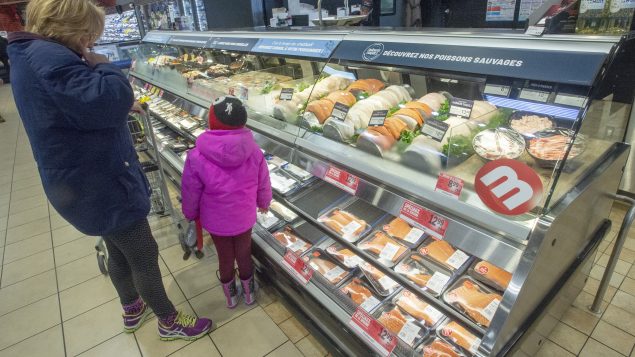A Canadian ocean conservation group is renewing its calls on the federal government to clamp down on seafood mislabelling, saying its latest investigation provides mounting evidence of a widespread and unchecked seafood fraud problem in Canada.
Oceana Canada says DNA testing of seafood samples from retailers across Montreal revealed that Canada’s second largest city has one of the highest rates of mislabelling found in testing across the country.
The testing showed that 61 per cent of 90 seafood samples from 50 grocery stores and restaurants in Montreal were either a substituted species or didn’t meet the labelling requirements set out by the Canadian Food Inspection Agency (CFIA), Oceana Canada said Wednesday.
The testing in Montreal conducted by Oceana Canada’s investigators in July is part of a national, multi-year investigation of seafood fraud and mislabelling at grocery stores and restaurants in Canada.
Nationally Oceana Canada’s investigation has shown that almost half of 472 samples – 47 per cent – collected in six Canadian cities from 2017-2019 were mislabelled.
The conservation group also carried out tests in Victoria, (67 per cent mislabelled), Toronto (59 per cent mislabelled) and Ottawa, (46 per cent mislabelled), Halifax, (38 per cent mislabelled) and Vancouver (26 per cent mislabelled).
A health concern
Josh Laughren, executive director at Oceana Canada, said the investigation found farmed fish served up as wild caught, cheaper species substituted for more expensive ones and fish banned in many countries because of health risks masquerading as another species.
When one fish species is substituted for another, or incorrect information is provided, consumers are put at risk of exposure to parasites, allergens, contaminants, aquaculture drugs and pesticides used in industrial farming operations, or natural toxins found in certain species, Laughren said.
“When you go to a sushi restaurant and get white tuna or butterfish, very often what you’re getting is actually a fish called escolar, which is charmingly nicknamed ‘the laxative of the sea,’ which is probably all I need to say and is banned for sale in some of the countries,” Laughren said in a phone interview with Radio Canada International.
“Yellowtail, one of my favourites, is often actually Japanese amberjack, a much cheaper fish that contains a natural toxin known as ciguatera, which can cause long-term neurological symptoms.”
(click to listen to the full interview with Josh Laughren)
ListenA pathway for the seafood black market

A customer looks at the seafood counter at a Metro store Monday, Apr. 15, 2019 in Ste-Therese, Que., north of Montreal. Conservation group Oceana Canada is calling on the federal government to institute a traceability system to follow seafood from boats to Canadian stores and restaurants. (Ryan Remiorz/THE CANADIAN PRESS)
Seafood fraud also provides a pathway for illegally caught fish to enter the market. In addition, when a cheaper, more abundant fish is mislabelled as a more expensive, less abundant one, it can give consumers a perception that the population is healthier than it actually is, Laughren said.
This undermines efforts to stop overfishing, manage fisheries responsibly and protect areas and animals in need of conservation, the conservation group added.
“We know from some recent studies that illegal fishing that happens has really poor labour standards, including child labour and almost slave labour,” Laughren said. “So for your wallet, for your health and for our oceans it’s a very bad practice.”
The solution to this problem is implementing boat-to-plate traceability and comprehensive labelling in Canadian seafood supply chains, Laughren said.
Follow the EU example
Canada should strive to implement measures similar to those adopted by the European Union, he said.
The EU, the world’s largest seafood importer, has instituted stringent traceability and comprehensive labelling requirements, Laughren said.
As a result, fraud rates dropped from 23 per cent in 2011 down to seven per cent in 2014, Laughren said.
Oceana Canada also wants to have much more information about the fish and where it was caught on Canadian labels.
“In the European Union, if you buy fish, it tells you where that fish was caught,” Laughren said. “In Canada, it doesn’t do that. It tells you last place that touched the fish.”
For example, a fish caught off Newfoundland is often send to China for processing, then goes to the United States or the EU for breading and when it comes back to Canada, its label would indicated the U.S. as the place of origin, he said.
Labels in the EU also have to include the scientific name of the fish, which is not the case in Canada.
“So snapper, for example, there is a hundred species of fish that can be sold as snapper in Canada,” Laughren said.
To put political pressure on the government Oceana Canada has launched a petition urging the the Canadian Food Inspection Agency to implement full boat-to-plate traceability, he added.







For reasons beyond our control, and for an undetermined period of time, our comment section is now closed. However, our social networks remain open to your contributions.